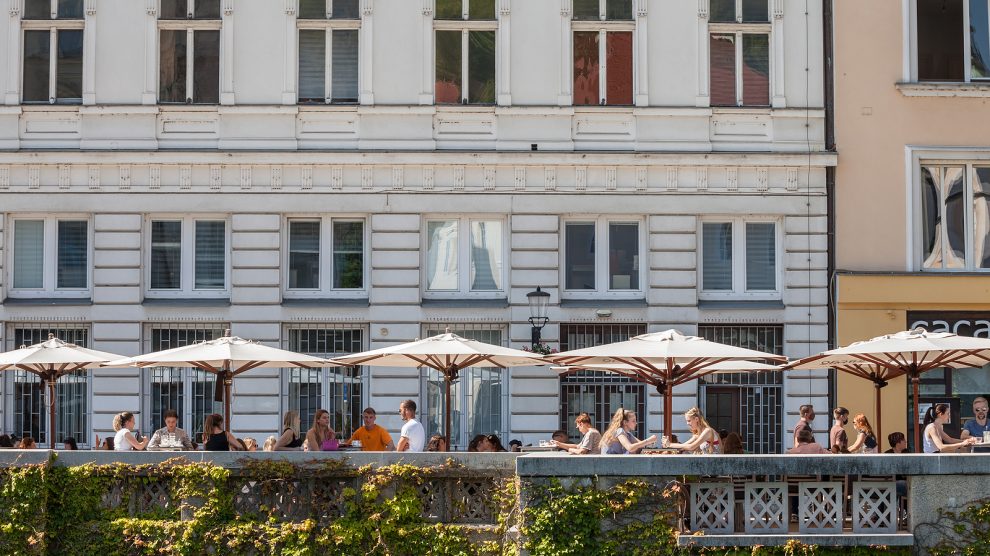Slovenia today is a developed, high-income economy with a higher GDP per capita in purchasing power parity than Spain, Poland, or any of the three Baltic states.
A small Adriatic country home to only 2.1 million people but some of Europe’s most stunning mountains, Slovenia has long punched above its weight economically.
While Slovenia accounted for only one-thirteenth of Yugoslavia’s total population, it was the most productive constituent republic—producing a third of Yugoslavia’s exports and one-fifth of its gross domestic product (GDP).
- Learning from the Asian tigers: CEE needs an industrial policy for a new growth model
- How CEE can become a hub for tech talent
- The botanical beauty of Slovenia’s Lake Bohinj
Since joining the European Union (EU) in 2004 and eurozone in 2007, Slovenia has continued to perform well. Despite suffering one of the largest reductions in GDP per capita in Europe in 2009—when annual GDP growth sank from 3.3 per cent in 2008 to -8.4 per cent in 2009—it is today a developed, high-income economy with a higher GDP per capita in purchasing power parity than Spain, Poland, or any of the three Baltic states.
Slovenia ranked ninth out of 23 countries in Emerging Europe’s 2023 IT Competitiveness Index, down from fifth in the region in 2022. In 2023, it ranked fifth in business environment and had the third highest average salary in information and communication technologies (ICT).
Slovenia currently has an A long term issuer default rating from Fitch.
Resilience
Despite the supply chain disruptions and surging energy and raw material prices caused by the war in Ukraine, the Vienna Institute for International Economic Studies (wiiw) forecasted in April that Slovenia’s industrial production is expected to increase by 1.8 per cent in 2023.
Inflation, as measured by the harmonised index of consumer prices (HICP), will decrease from 9.3 per cent in 2022 to 6.4 per cent in 2023 and 3.2 per cent next year. GDP is expected to grow by 1.4 per cent in 2023 and then increase to 2.5 per cent in 2024. This growth rate remains higher than the EU average.
“2023 will mark a significant slowdown in private consumption, the main driver of growth in the previous two years,” predicts wiiw country expert for Slovenia and author of its April forecast, Niko Korpar.
“In part due to the end of the post-pandemic rebound and in part due to lower consumer confidence, private consumption will grow only by 0.8 per cent in 2023. Instead, growth will be driven by government spending on construction projects and public buildings, as well as by foreign trade. Much of this spending will be driven by EU cohesion funds from the ending Multiannual Financial Framework (MFF) for 2014-2020 and incoming Recovery and Resilience funds.”
Foreign trade has exceeded expectations and exports are predicted to grow by 2.6 per cent this year, significantly contributing to GDP growth.
Unemployment will remain at a historically low four per cent for a second year in a row and could decrease to 3.9 per cent in 2024. Amid worker shortages, the government is making it easier to hire foreign workers—mostly from Albania and Bosnia and Herzegovina—and real wages will increase despite inflation.
New reforms
In response to a shortage of teachers, the Slovenian parliament passed a bill in June to make it easier to hire teaching staff.
The legislation allows schools to hire job candidates with adequate education but who have not year passed the certification exams for teachers for two to three years, after which they must pass the exam to obtain a permanent position.
The government of left-liberal prime minister Robert Golob has pursued an ambitious array of reforms in housing affordability, taxes, pensions, healthcare, and the public sector salary system.
After over two decades of attempts by previous governments to create a long-term care system for Slovenia’s elderly and infirm, its parliament passed legislation doing just that on July 17. Its funding model—a one per cent contribution rate taken from gross salaries and net pensions and a two per cent contribution from sole proprietors and farmers beginning in mid-2025—has met heated criticism from the centre-right opposition and business community for potentially increasing the cost of labour.
Until now, long-term care in Slovenia has been mostly provided by personal assistants and nursing homes, and private providers are largely excluded from the new system, which has drawn further objections.
In response to price hikes by private insurers earlier this year, the government passed health insurance reform on July 6 that turns supplementary health insurance into a mandatory contribution attached to regular health insurance premiums. In late June, the government extended regulations introduced last year to keep fuel prices down by a year.

Downsizing the recovery
The government is also downsizing its national Recovery and Resilience Plan and scrapping several much-criticised flood mitigation projects amid delays.
Only 545 million euros of loans, rather than the originally planned 705 million euros, will be used. The European Commission had previously warned Slovenia that further delaying the plan’s implementation was risky, that it should strengthen its administrative capacity, and to ensure that the necessary decisions were taken immediately. The plan had been devised by the previous right-wing government, but Golob’s government sought to make changes to it despite pushback from the Commission.
“One of the main criteria used by the government to identify investments was time risk,” said finance minister Klemen Boštjančič. “All investments included in the plan must be completed by mid-2026.”
Despite this downsizing, the new reforms and continued economic growth will ensure that Slovenia remains one of the most dynamic countries in the region.
Unlike many news and information platforms, Emerging Europe is free to read, and always will be. There is no paywall here. We are independent, not affiliated with nor representing any political party or business organisation. We want the very best for emerging Europe, nothing more, nothing less. Your support will help us continue to spread the word about this amazing region.
You can contribute here. Thank you.







Add Comment